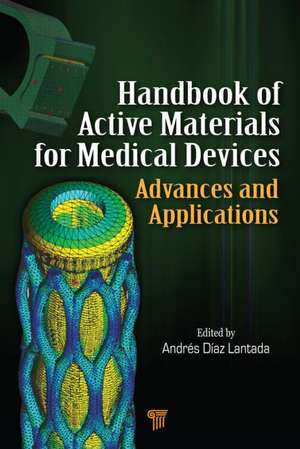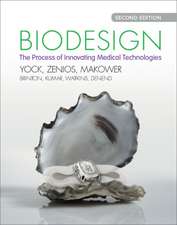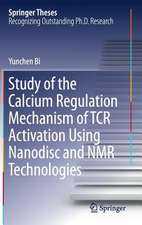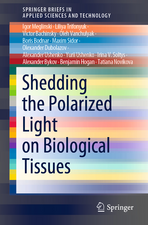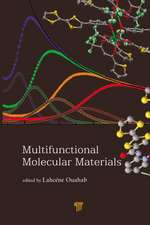Handbook of Active Materials for Medical Devices: Advances and Applications
Editat de Andres Diaz Lantadaen Limba Engleză Hardback – 28 sep 2011
Current work on these fields entails problems related to synthesis, characterization, modeling, simulation, processing, and prototyping technologies, as well as device testing and validation, all of which are treated in depth in this book, for the several types of active or intelligent materials covered. The research presented in this book helps further development of medical devices, based on the additional functionalities that the use of active or "intelligent" materials, both as sensors and actuators, supplies. The main results exposed may help with the industrial expansion of this kind of materials as part of more complex systems.
Preț: 1064.03 lei
Preț vechi: 1438.21 lei
-26% Nou
Puncte Express: 1596
Preț estimativ în valută:
203.63€ • 221.11$ • 171.05£
203.63€ • 221.11$ • 171.05£
Carte tipărită la comandă
Livrare economică 22 aprilie-06 mai
Preluare comenzi: 021 569.72.76
Specificații
ISBN-13: 9789814303361
ISBN-10: 9814303364
Pagini: 550
Ilustrații: 16 b/w images and 160 color images
Dimensiuni: 152 x 229 x 33 mm
Greutate: 0.1 kg
Ediția:1
Editura: Jenny Stanford Publishing
Colecția Jenny Stanford Publishing
ISBN-10: 9814303364
Pagini: 550
Ilustrații: 16 b/w images and 160 color images
Dimensiuni: 152 x 229 x 33 mm
Greutate: 0.1 kg
Ediția:1
Editura: Jenny Stanford Publishing
Colecția Jenny Stanford Publishing
Public țintă
Academic and PostgraduateCuprins
Introduction to Product Development and Systematic Methodologies. General Considerations for Developing Medical Devices. Active Materials in Medical Devices. Shape Memory Alloys for Biodevices. Shape Memory Polymers for Biodevices. Electroactive Polymers as Actuators for Biodevices. Electroactive Polymers as Sensors for Biodevices. Pyroelectric Materials for Biodevices. Active Ceramics for Biodevices. Magnetically Active Materials for Biodevices. Optoactive and Photoactive Materials for Biodevices. Hydroactive Materials for Biodevices. Microstructured Active Materials in Biodevices. Nanostructured Active Materials in Biodevices. Novel Techniques, Methods and Processes for Active Materials in Biodevices. A Proposal for Structured Development Methodology.
Recenzii
"This book is an excellent summary of the up-to-date knowledge on currently available and future active materials for medical applications. The research-oriented structure and content of the book makes it unique and one of a kind."
—Prof. Emilio Bautista Paz - Universidad Politécnica de Madrid, Spain
—Prof. Emilio Bautista Paz - Universidad Politécnica de Madrid, Spain
Notă biografică
Andres Diaz Lantada studied industrial engineering and specialized in mechanical engineering at the Universidad Politécnica de Madrid (UPM), Spain (www.upm.es). He obtained his Ph.D. in mechanical engineering in 2009 with a thesis on "methodology for the structured development of medical devices based on active polymers." He has worked for 10 years as a researcher at this university’s Mechanical Engineering Department and collaborated actively with its Product Development Laboratory, in both research and teaching tasks. Currently he works as assistant professor at UPM and teaches subjects at both the graduate and postgraduate levels, as well as specialization courses. He is also actively engaged in conducting research on different areas related with product development. He has published more than 100 peer-reviewed scientific publications, several books and book chapters and is the co-inventor of 10 patents on the use of active materials for improving the sensing/actuating capabilities of medical products.
Descriere
This book covers biodevices, mainly implantable or quirurgical, for the diagnosis or treatment of different pathologies, which benefit from the use of active materials as sensors or actuators. The research presented in this book helps further development of medical devices, based on the additional functionalities that the use of active or "intelligent" materials, both as sensors and actuators. The main results covered may help with the industrial expansion of this kind of materials as part of more complex systems.
